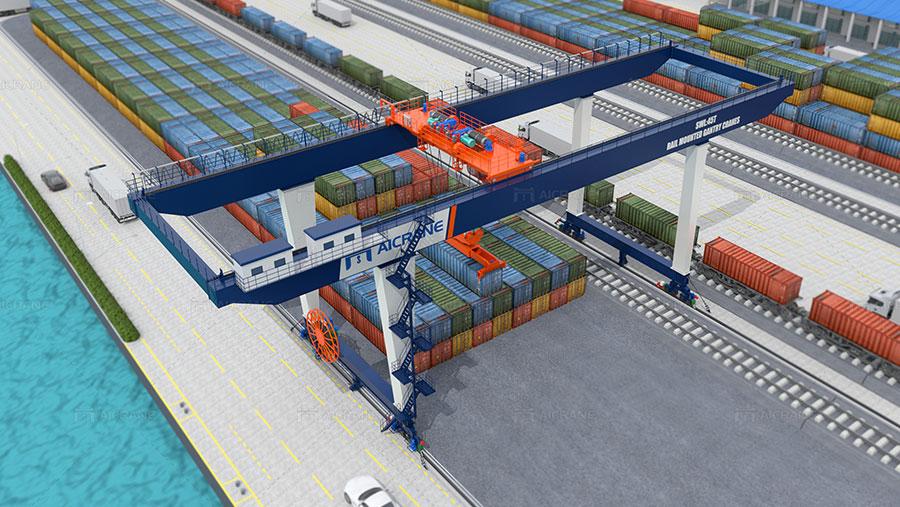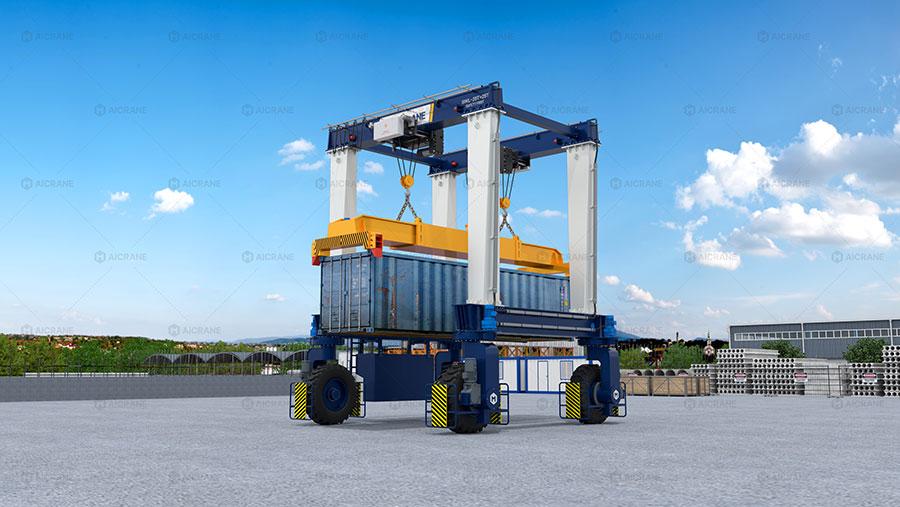Gantry cranes, essential pieces of heavy lifting equipment used in various industries, are known for their versatility and ability to handle massive loads. They are designed to lift, move, and transport heavy materials across factories, construction sites, shipping yards, and warehouses. However, when it comes to purchasing a gantry crane, one of the most significant factors that can impact its cost is the material handling requirements of the specific application. The price of a gantry crane can vary widely depending on the type of materials it needs to handle, the required lifting capacity, and the operating environment. This article will explore why gantry crane prices vary based on material handling needs and the factors that contribute to these price fluctuations.

1. Load Capacity: The Foundation of Price Variation
The most obvious factor that affects the gantry crane price is its load capacity. Gantry cranes come in different weight ranges, and the lifting capacity is often directly proportional to the price of the crane. A crane with a higher load capacity typically costs more because it requires more robust materials, a stronger frame, and more advanced engineering to safely lift and move heavier objects.
Light-duty gantry cranes, typically used for lifting smaller materials or light to moderate loads, are less expensive. These cranes might have a lifting capacity of 1 to 10 tons and are ideal for applications such as small workshops, warehouses, or repair yards.
Heavy-duty gantry cranes, designed for industrial operations like steel mills, construction sites, or ports, can handle 100 tons or more. These cranes come with heavier-duty components, including reinforced beams, more powerful motors, and specialized hoisting mechanisms. Naturally, these features add to the cost.
Material handling needs that involve particularly heavy, bulky, or delicate materials often require gantry cranes with higher load capacities. For example, a crane used to transport large steel beams or ship components will be significantly more expensive than one used for smaller, lighter items. The greater the weight of the material that the crane needs to lift, the higher the design and manufacturing costs.
2. Type of Material Being Handled: Tailored Features for Specific Materials
Different materials have different handling needs. Gantry cranes designed for specialized tasks, such as lifting hazardous materials, oversized components, or extremely delicate items, come with unique features and equipment. These specialized needs influence the design, materials, and ultimately the price of the crane.
For example, cranes used in the steel industry need to have features that allow them to lift hot, heavy steel plates or coils. These cranes may include additional safety features such as heat-resistant coatings or specialized lifting attachments, which add to the overall cost.
Cranes used in the aerospace industry often require precision and delicate handling of aircraft components. The materials used in these cranes are designed to reduce the risk of damaging expensive parts, which can increase the price.
Handling hazardous materials such as chemicals or flammable substances requires gantry cranes equipped with specific safety features, such as explosion-proof motors, anti-static systems, and corrosion-resistant materials. These special features raise the price of the crane compared to standard cranes used for less sensitive applications.
When a gantry crane is designed to handle specific materials, the manufacturer must account for the properties of those materials, which leads to a more customized, and therefore more expensive, solution. For instance, cranes designed for concrete casting or for use in bulk material handling will have different specifications compared to those used in shipping ports for container handling.
3. Operating Environment: Outdoor vs. Indoor Use
The operating environment of a gantry crane significantly influences its design, which directly impacts its price. Gantry cranes that are used in harsh or outdoor environments require additional features to ensure their durability and reliability. For example:
Outdoor gantry cranes used in shipyards, construction sites, or port facilities need to be built with weather-resistant materials to withstand harsh conditions, such as rain, snow, extreme temperatures, and corrosive environments. The cost of materials and components needed to make these cranes weatherproof or resistant to corrosion will naturally drive up the price.
Indoor gantry cranes, on the other hand, generally have fewer environmental considerations. These indoor gantry cranes may not need to be as robust in terms of weatherproofing, but they may require additional safety features or quieter operations to meet specific workplace standards, particularly in environments where workers are close to the crane.
The climate and weather conditions in which the crane will be used also play a significant role in the price. For example, cranes used in high-humidity coastal regions may require additional corrosion-resistant coatings, which add to the cost. Similarly, if a crane is to be used in an extreme cold environment, it may require special components that prevent the machinery from freezing or malfunctioning, which increases the price.

4. Lifting Height and Span: Additional Costs for Custom Features
In addition to the load capacity, the lifting height and span of a gantry crane are crucial factors that impact its price. The lifting height is the vertical distance the crane can lift its load, and the span refers to the horizontal distance between the crane’s support legs.
Cranes with a large span and high lifting height require more complex designs, additional engineering, and stronger materials to ensure stability and safety. These features can significantly raise the cost, especially when tailored to specific material handling requirements.
Custom gantry cranes designed to fit specific buildings, spaces, or material handling needs often come with a higher price tag. For example, a crane designed to handle oversized construction beams in a narrow factory space may need a unique span or height adjustment that requires extra fabrication and custom engineering.
5. Automation and Technology: High-Tech Cranes for Modern Demands
As industries continue to embrace automation, the integration of technology into gantry cranes has become a significant factor in determining their price. Cranes with automated features, such as remote control, automatic load positioning, and intelligent load monitoring systems, come with higher initial costs. These technological advancements improve the efficiency and safety of material handling processes but also raise the price of the crane.
Automated gantry cranes are often used in industries that require high throughput and precision, such as in container terminals or automated warehouses. The complexity of these systems requires more advanced sensors, software, and controllers, all of which contribute to the higher price.
Technology-driven safety features, such as anti-collision sensors, overload detection, and precise load control, are increasingly being added to cranes to improve safety and operational efficiency. These features, while beneficial, can also add to the overall price.
6. Customization and Specialized Design: More Specific Requirements, Higher Cost
Customization is another major factor that affects the price of gantry cranes. While standard gantry cranes may come at a relatively lower cost, a crane that is customized to meet the specific material handling needs of a business will be significantly more expensive.
For example:
Customized lifting attachments like spreader bars or lifting beams designed to handle specific types of loads (such as barrels, containers, or irregularly shaped components) can increase the cost.
Non-standard features like additional hoists, custom-built tracks, or unique control systems also drive up the price, as they require specialized parts and design expertise.
7. Maintenance and After-Sales Service: Additional Considerations
Finally, after-sales support and maintenance services can play a role in determining the overall cost of a gantry crane. Cranes that are designed to handle materials in heavy-duty or high-risk environments may come with extended warranties or additional maintenance packages to ensure they continue operating efficiently and safely. These add-ons can significantly affect the total price.
Conclusion
The price of a gantry crane is influenced by a multitude of factors that are directly tied to the material handling needs of a business. Whether it’s the load capacity, the type of materials being lifted, the operating environment, the height and span requirements, or the need for specialized features and technology, each aspect adds to the overall cost. When choosing a gantry crane, businesses need to assess their specific material handling requirements carefully to determine the most appropriate crane for their needs and budget.
In summary, while the initial price tag of a gantry crane may seem steep, understanding the material handling requirements and how they influence the design and features of the crane can help businesses make informed decisions. Investing in the right crane for the job is not just about cost—it’s about ensuring long-term performance, safety, and efficiency in the material handling process.